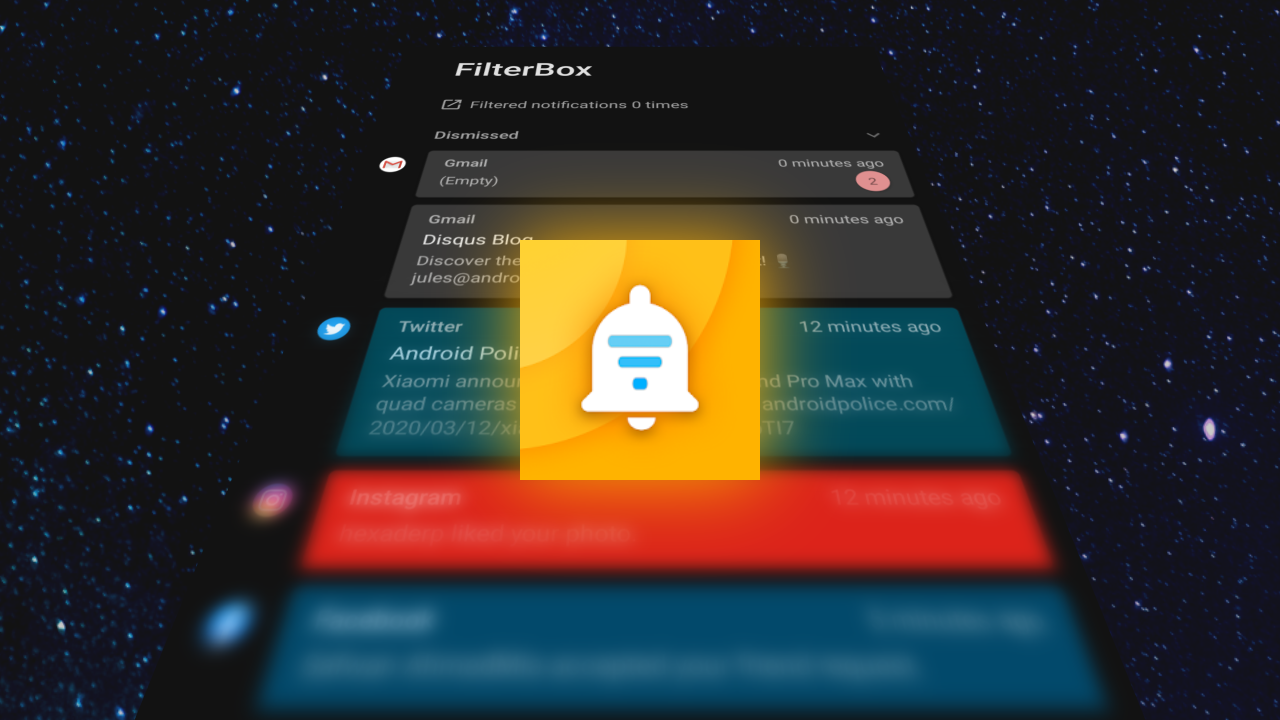If you feel like you've spent way too much time swiping on notifications rather than other things, there are some actions you can take to get a better handle on them — sorting apps into different notification channels and occasionally checking on your system's notification log are just a couple. But if you feel like you need a full-on notification manager app, there are quite a few options for you. One of the newest ones is FilterBox, an app from Catching Now, the Chinese developer of clipboard manager Clip Stack.
The home screen of the app shows a log of all recent notifications — active or dismissed — for up to 3, 7, or 30 days as prescribed in the settings. Once that log grows long enough, users are able to jump to a specific point in the timeline by swiping down the right edge of the screen.
Tapping on a notification gives detailed information about the notification and the app that sent it along with several options you see above.
Filtering out certain pushes from being shown in the notification shade means making rules. A single rule can apply across multiple apps, scouring for words, phrases, or even a regex if you happen to carry a fine-tooth comb like that. By default, FilterBox pops up an occasional notification showing how many messages it has filtered — this can be turned off this notification in the app's settings.
The app can also restore pushes back into the notification shade so that users can take advantage of the quick actions it offers. We tried this out with a Gmail message and were able to get to the drafting screen by hitting Reply, but weren't able to get the Delete option working. For Twitter, in which case I saw a tweet from someone I'm actively following, I was able to Like from the FilterBox "undead" notification, but the Twitter app ran its own process to pop up a separate notification to tell me that my like was successful. Notifications will appear under the FilterBox name, but the icon will be of the original app.
You might compare that capability to the "undo" feature of Unnotification, another manager app we've covered, which relies on a background service (and the requisite persistent notification to boot) to catch notifications one has swiped and lets them undo the swipe within a few seconds. FilterBox gives more flexibility in this case by letting users revive a notification however many times they'd like for however long they have a log of it. However, with the above usage example as a caveat, your mileage may vary.
The analytics page lets users sort out apps based on name, total notification count, or how many times it has had its pushes filtered. Tapping on any of the apps shows the full list of said pushes and their contents.
Speaking of settings, the app does have a dark mode, toggleable on a permanent or scheduled basis. FilterBox can be configured to not appear on the recent apps screen, limit access with biometric authentication, and import or export filters through .json files.
FilterBox was already on the Chinese app store circuit, but is now available from the Play Store. If you install it, you'll get full functionality free for 90 days, but you'll then need to make a single $3.99 in-app purchase in order to keep it.

